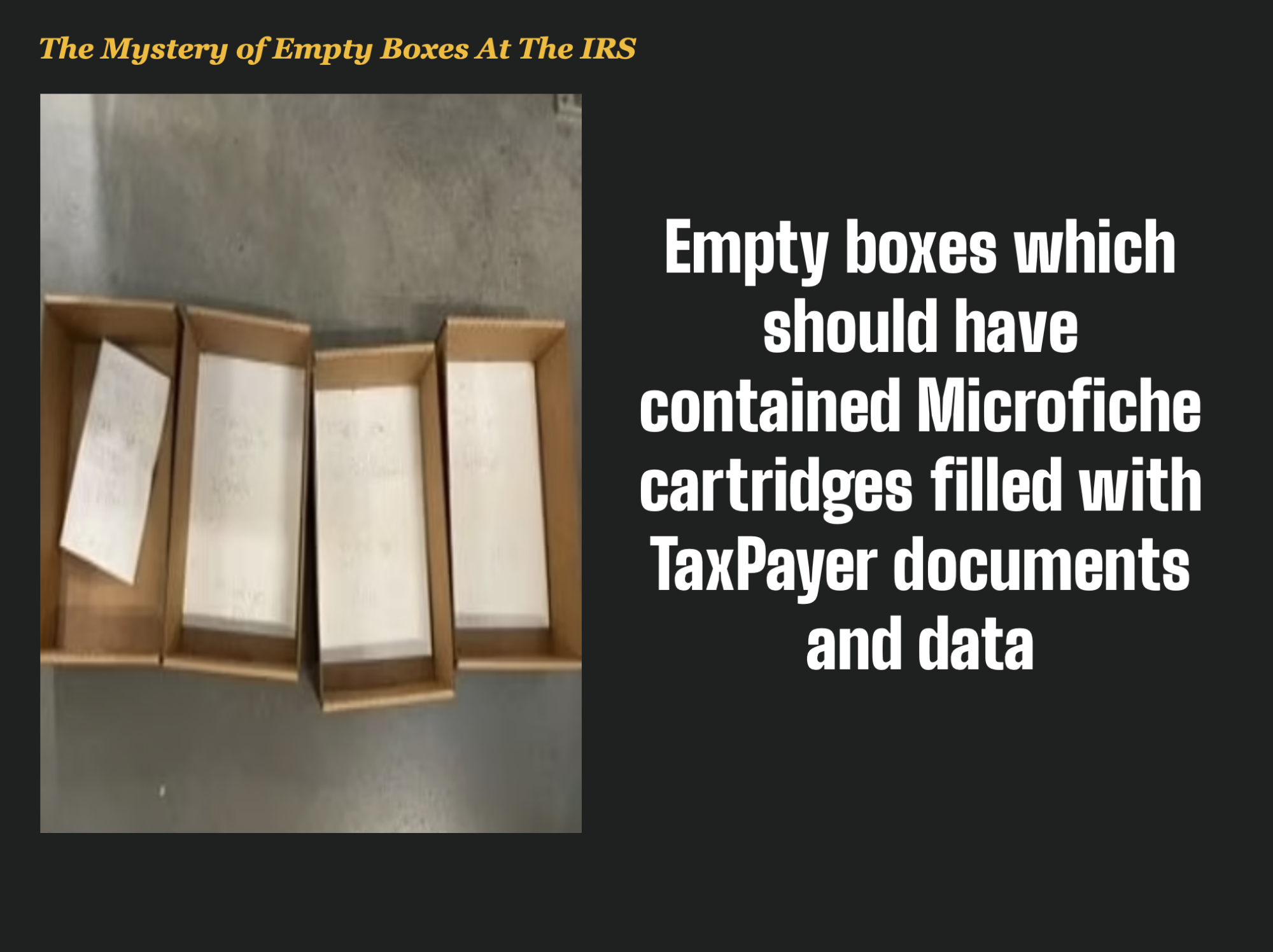A report by a watchdog group is calling into question the IRS’s processes for protecting taxpayer data.
And a report that appears in the Daily Mail this week indicates that the IRS has lost track of millions of sensitive records putting taxpayers at risk of identity fraud.
Whose data is missing and what is the extent? That is the question.
The Mystery of Empty Boxes And Missing Microfilm
Auditors for The Treasury Inspector General for Tax Administration (TIGTA) were doing an audit of IRS offices in Ogden Utah when they noticed something strange – 7 empty boxes sitting in the warehouse.

Those boxes should have contained as many as 168 microfilm cartridges, holding up to 2,000 photographic images of records. The IRS uses microfilm cartridges to store backup records of business and individual tax information.
And it didn’t stop there. TIGTA also found that 8,000 microfilm cartridges, which were supposed to be transferred to an IRS processing center in Kansas City from California in 2021, were unaccounted for.
If you’re wondering how the tapes could have stolen or come up missing, it’s because the boxes were stored in the middle of the warehouse on open shelving.
Is the missing microfiche cartridges a case of stolen data, or simply misplaced? That is the real question.
IRS Is Accused of Destroying 30 Million Taxpayer Records from 2021
This isn’t the first time that TIGTA has accused the IRS of mishandling taxpayer data. Last year they accused the IRS of destroying data for an estimated 30 million filers in March of 2021.
The revelation of the empty boxes comes on the heels of a report that the nations largest tax preparation companies, like H&R block reportedly leaked tens of millions of Americans’ private details to Google and Meta.
It hasn’t been a good week for tax data – which is some of the most robust and comprehensive data that fraudsters and hackers love to get their hands on.
Read The Whole Report
The watchdog report contains many recommendations for the IRS to improve upon and you can read it all here.



